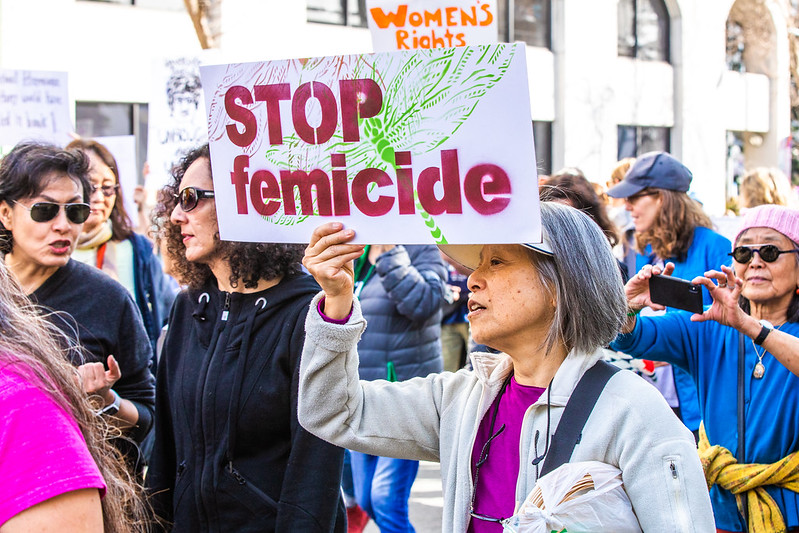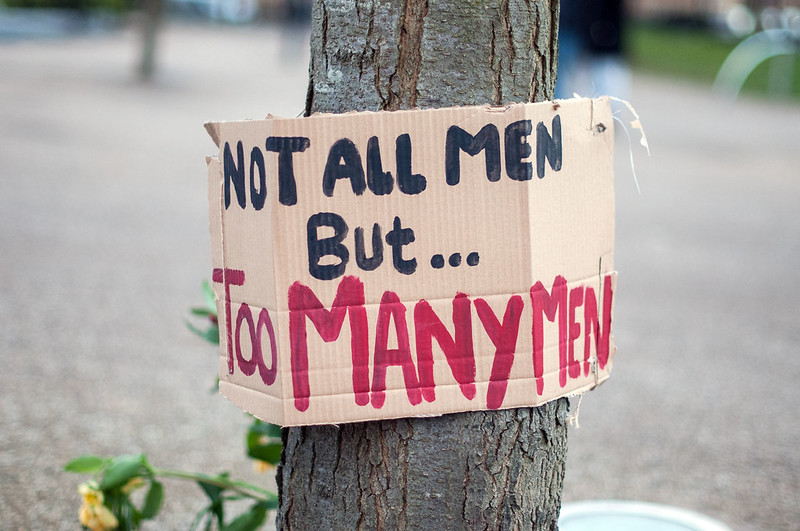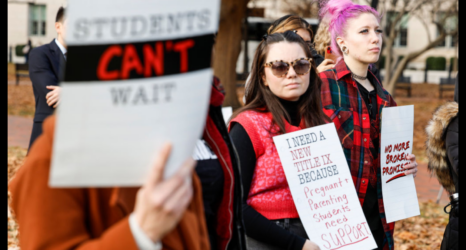It is high time we reconnect with the idea of gender bias and its pernicious and all-too-often deadly relationship with violence against women.

Men sometimes kill women because they are women. Sometimes, as is likely the case with the horrific killings in Atlanta, men kill women because they are women and because of other aspects of their identity—race, sexual orientation, disabilities. But still, because they’re women.
This gendered killing of women has a name: femicide, coined by Diana Russell almost 30 years ago. Countries from Argentina to Mexico to France have seen thousands of people take the streets to protest femicide. Heeding the call of the United Nation’s Special Rapporteur on Violence Against Women, many countries, including our neighbors to the north, have created institutions tasked with tracking and studying femicides. Several Latin American countries have gone further and passed laws to combat femicide by, for example, making femicide a crime unto itself or a circumstance that can add to a person’s sentence.
The United States, on the other hand, has no law calling femicide a crime. In fact, most people here have never heard of the term. And yet some 2,000 women are killed by men in the U.S. every year. We need to wake up to the role of gender in the killing of women.
Existing Ways of Fighting Femicide Are Inadequate
Prosecute for Homicide
For starters, the United States either needs to enact better laws to fight femicide or to use its existing laws a lot better. Right now, American law offers three main ways of dealing with the killing of women: First, we prosecute perpetrators for ordinary homicide. We do not have the same problem of impunity for perpetrators of femicides as in many countries with femicide laws. But prosecutors in ordinary homicide cases have little incentive to explore gender biases to get a jury to convict, and doctrines like heat of passion or extreme emotional disturbance may help men get off lightly for murdering women.
Violence Against Women Act
Second, we have the Violence Against Women Act. VAWA is one of President Biden’s career achievements as a legislator and seems to have helped reduce violence against women. VAWA operates largely through grants used to support local efforts to support victims and prosecute offenders.
VAWA originally included a civil rights provision creating a right of action for victims of gendered violence, but in 2000 the US Supreme Court found this part of the statute unconstitutional. Out with the civil rights provision of VAWA went much of its identity as a human and civil rights measure. (The women part of the VAWA has also necessarily been deemphasized as part of important and necessary changes designed to ensure that LGBTQI victims of violence also benefit from VAWA-funded services).
Hate Crimes
Finally, we have hate crimes. Hate crime statutes add sentencing enhancements and sometimes civil penalties for crimes where perpetrator’s conduct is motivated by particular biases. Depending on the state, these may include biases related to race, religion, sexual orientation, gender identity, gender and disability. Typically, the prosecutor needs to prove the defendant committed a crime and did so at least in part because of a listed bias.
There was staunch opposition to the inclusion of gender in the federal hate crime statute—an opposition at least partially rooted in a fear that because violence against women is so prevalent, these cases would swallow the entire category. Not so, as it turns out. Data on state prosecutions is hard to come by, but if data on law enforcement reports of gendered hate crime are any indication, rarely is anyone prosecuted for a hate crime based on gender.
To be sure, proving the gender bias motive for a hate crime may not be easy, but the problem appears to transcend matters of proof. Whereas the FBI data puts gendered hate crimes at 1 percent of cases; the National Crime Victim survey (which asks victims) puts it at 30 percent. Something is getting lost in translation.

The Department of Justice (DOJ) seems to have the same blindspot. Their website provides examples of actual hate crime prosecutions, but it lists no example of a prosecution of a hate crime against a women based on gender bias. There hasn’t been one. (DOJ has prosecuted a couple of cases the killing of transgender women based on “gender identity.”).
The DOJ has trouble coming up with even a hypothetical hate crime against a cisgender woman. The DOJ’s “teaching page” lists 28 examples of fictional illustrative hate crimes, but none based on a hate crime against a cisgender woman because she is a woman.
Here’s the one hypothetical hate crime involving a cisgender woman that DOJ does offer: a woman who hates men because she has been rejected by men all her life, so she takes a gun to a men’s locker room and opens fire. This hypothetical scenario seems very consciously “degendered” by flipping it from the far more plausible reverse scenario. Why do we have so much trouble accepting that a cisgender woman can be the victim of a hate crime based on her gender? Surely incels have made that point loud and clear.
This should not be so hard. Just as calling out anti-Asian discrimination is long overdue, it is also high time that we reconnect with the idea of gender bias and its pernicious and all-too-often deadly relationship with violence against women.
As a candidate, President Biden pledged to reinvigorate hate crime prosecutions. Hate crimes based on gender should be more than just window dressing on a statute. Prosecutors and police need to look long and hard at possible gender biases in cases and give some thought to why they so seldom see any.
Hate crime prosecutions are no panacea, and we must be aware of their potential to be abused to compound other structural inequities. They are an important tool in raising awareness of bias and discrimination. Perhaps most importantly though, in the United States we need to learn to speak femicide. It is America’s problem too.
Up next:





